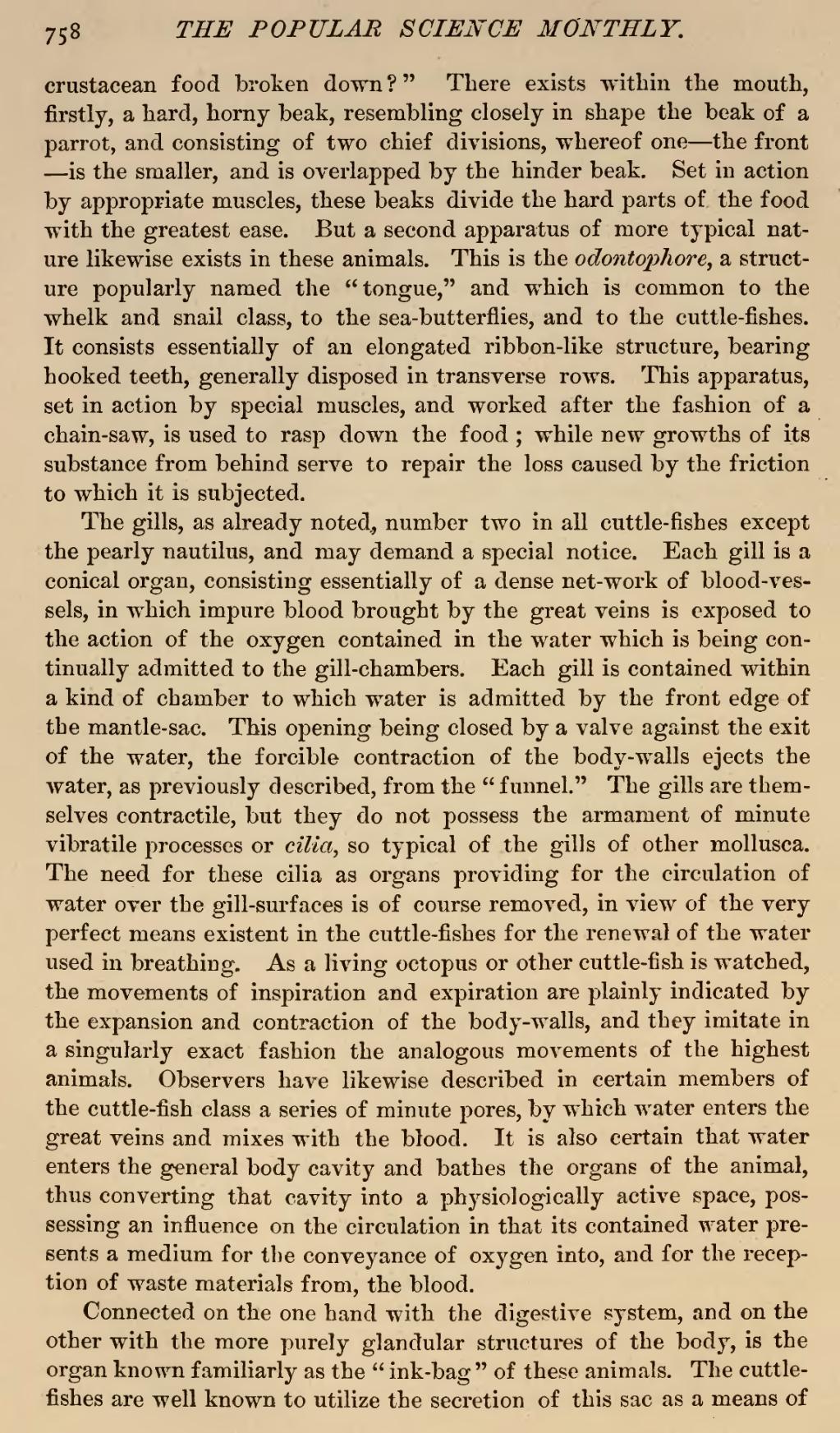crustacean food broken down?" There exists within the mouth, firstly, a hard, horny beak, resembling closely in shape the beak of a parrot, and consisting of two chief divisions, whereof one—the front—is the smaller, and is overlapped by the hinder beak. Set in action by appropriate muscles, these beaks divide the hard parts of. the food with the greatest ease. But a second apparatus of more typical nature likewise exists in these animals. This is the odontophore, a structure popularly named the "tongue," and which is common to the whelk and snail class, to the sea-butterflies, and to the cuttle-fishes. It consists essentially of an elongated ribbon-like structure, bearing hooked teeth, generally disposed in transverse rows. This apparatus, set in action by special muscles, and worked after the fashion of a chain-saw, is used to rasp down the food; while new growths of its substance from behind serve to repair the loss caused by the friction to which it is subjected.
The gills, as already noted., number two in all cuttle-fishes except the pearly nautilus, and may demand a special notice. Each gill is a conical organ, consisting essentially of a dense net-work of blood-vessels, in which impure blood brought by the great veins is exposed to the action of the oxygen contained in the water which is being continually admitted to the gill-chambers. Each gill is contained within a kind of chamber to which water is admitted by the front edge of the mantle-sac. This opening being closed by a valve against the exit of the water, the forcible contraction of the body-walls ejects the water, as previously described, from the "funnel." The gills are themselves contractile, but they do not possess the armament of minute vibratile processes or cilia, so typical of the gills of other mollusca. The need for these cilia as organs providing for the circulation of water over the gill-surfaces is of course removed, in view of the very perfect means existent in the cuttle-fishes for the renewal of the water used in breathing. As a living octopus or other cuttle-fish is watched, the movements of inspiration and expiration are plainly indicated by the expansion and contraction of the body-walls, and they imitate in a singularly exact fashion the analogous movements of the highest animals. Observers have likewise described in certain members of the cuttle-fish class a series of minute pores, by which water enters the great veins and mixes with the blood. It is also certain that water enters the general body cavity and bathes the organs of the animal, thus converting that cavity into a physiologically active space, possessing an influence on the circulation in that its contained water presents a medium for the conveyance of oxygen into, and for the reception of waste materials from, the blood.
Connected on the one hand with the digestive system, and on the other with the more purely glandular structures of the body, is the organ known familiarly as the "ink-bag" of these animals. The cuttlefishes are well known to utilize the secretion of this sac as a means of

